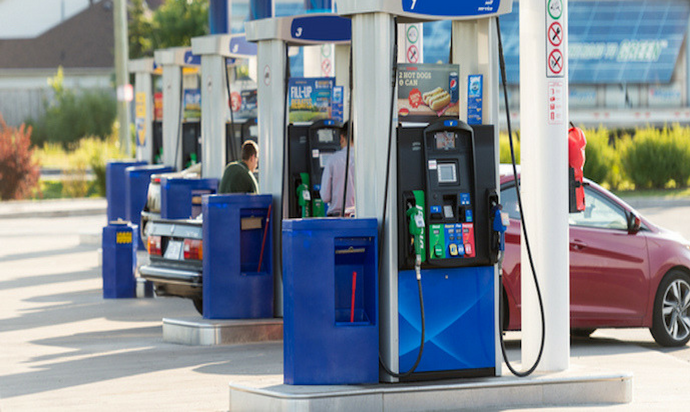When you drive up to the pump at your neighbourhood gas station, you’ll often see the gasoline brand advertised as, for example, Esso or Shell.
But that doesn’t mean the station is owned or operated by the companies that own those major brands. The gasoline retailing landscape has changed dramatically over the last couple of decades. Even though gasoline is mainly produced at 14 refineries, operated by nine refining companies, it is largely sold to the consumer by downstream marketers and retailers.
“The posted brand on the site is not necessarily representative of who owns the assets or who sets the price,” explains Jason Parent, vice-president, consulting for the Kent Group Ltd.
“Most people pull up to an Esso station, for example, and would assume that Esso controls the site and sets the price.”
That’s no longer the case. In fact, the Kent Group’s 2016 National Petroleum Retail Site Census showed there are 10 distinct fuel marketers and more than 1,000 individual site operators (or dealers) that set pump prices at Esso-branded stations across Canada. In addition, Imperial Oil, the owner of the Esso brand in Canada, did not have a direct relationship with any of the more than 1,800 Esso branded retail sites in Canada. This type of approach to the operation of retail fuel site networks is increasingly common among refiner-owned brands in Canada.
While you’ll still see the refineries’ brand names at almost 60 per cent of all retail sites in Canada, only 14 per cent of sites have their prices set by those same refiners.
Why is this happening, and what does it mean to the consumer? We asked Parent to explain.
Why is the number of gasoline distributors increasing?
From the refiners’ perspective, they seek to have a known buyer or distribution channel for their production. This had traditionally been accomplished through the direct operation of a branded retail network.
Over the years, refiners realized they could achieve this same result by establishing branded-supply relationships with regional distributors, allowing integrated refiners to sell their retail assets, and freeing up capital to potentially seek higher returns further upstream (on their crude extraction and refining businesses.)
In addition, marketers and retailers are often specialized in distribution, grocery, or convenience retailing, and are often better positioned to compete in the lower margin retail fuel sector. Large convenience retailers such as Couche-Tarde and 7-Eleven are getting more involved as marketers of fuel, as convenience retailing has become a more critical component to the viability of retail fuel operations.
What does this mean to the consumer?
One of the things it does is diversify price control.
In Ontario, for example, there are just over 3,200 retail sites. A small number of those sites are controlled by refiners — about 20 per cent, meaning 80 per cent are controlled by 25 marketing organizations and roughly 1,500 independent retailers.
How does the marketer-retailer relationship work?
There are several basic operating structures that can broadly be categorized as either controlled and non-controlled. A controlled site means the marketer owns the fuel inventory and sets the price at the site, and non-controlled means the retailer owns the fuel inventory and sets the price.
The controlled sites often operate as commissioned agents, meaning the marketer retains ownership of the fuel and the retailer is paid a commission on its sales. A non-controlled retailer simply buys fuel from the marketer, and resells at its independently owned and operated retail site.
Non-refiner marketers operating refiner-branded sites buy fuel on a branded contract from refiners. These marketers can also operate under their own brands. One example of this is Parkland Fuels operating sites under the Pioneer banner.
How many companies are involved in marketing gasoline?
In the survey, we identified 69 companies in Canada managing at least two stations, and of those marketers, 59 operate at least some of their retail network under their own brands.
The big three names in refining, however, still dominate. Suncor, Esso or Shell brands appear at 39 per cent of stations across the country. However, they maintain price control at only 11 per cent of stations.
Interested in learning more about gas pricing? Check out our infographic on what makes up the price at the pump.

